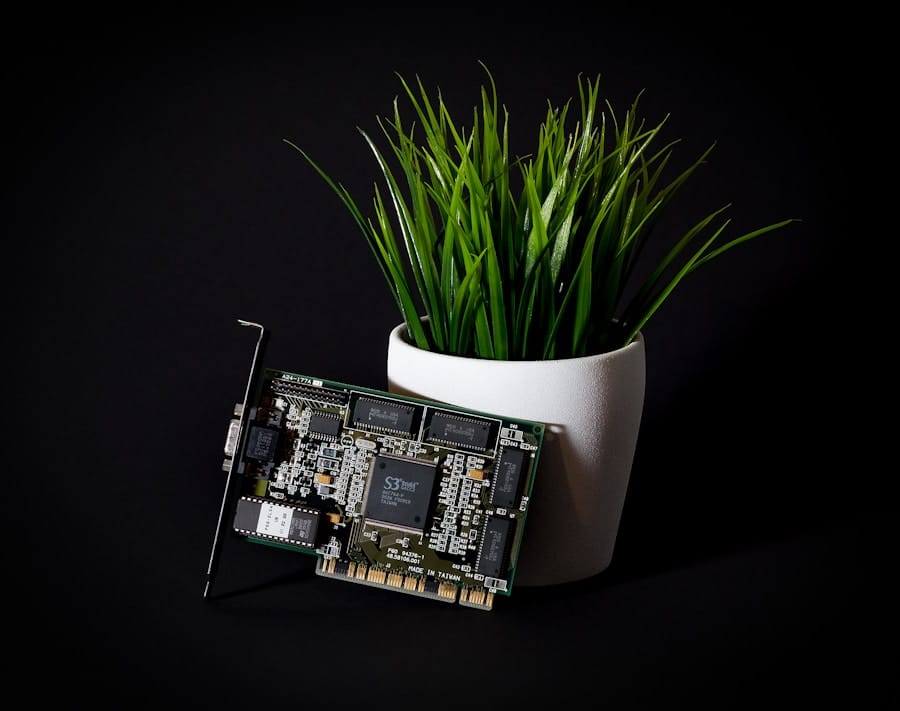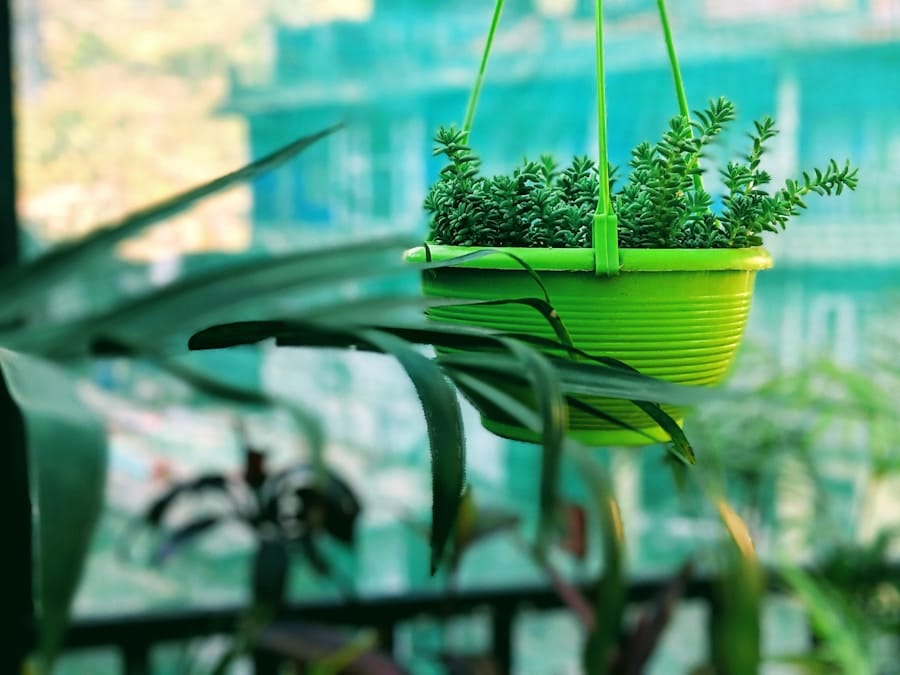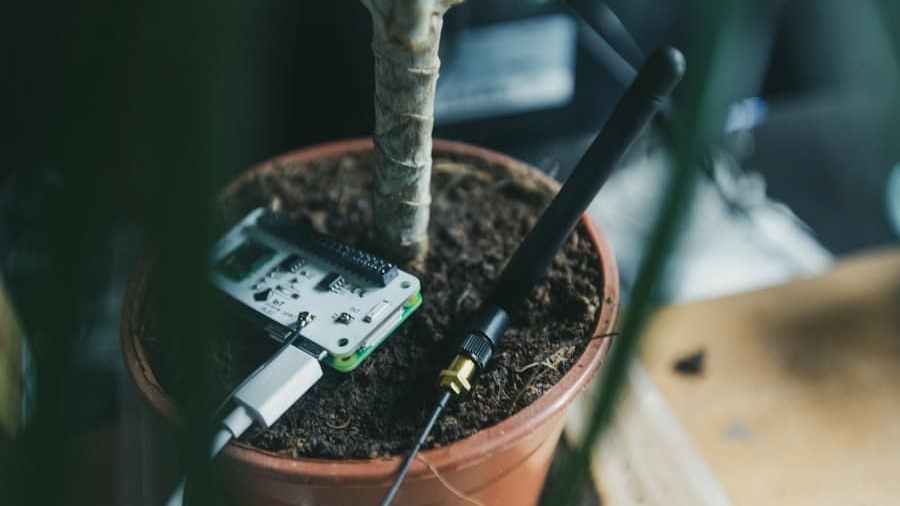The advent of artificial intelligence (AI) has permeated various sectors, and agriculture is no exception. AI-powered smart gardens represent a significant leap forward in the way we approach plant care and cultivation. These innovative systems leverage advanced technologies to create an environment where plants can thrive with minimal human intervention.
By integrating sensors, machine learning algorithms, and data analytics, smart gardens can monitor environmental conditions, optimize resource usage, and even predict plant health issues before they become critical. This transformation not only enhances the efficiency of gardening but also aligns with the growing demand for sustainable practices in food production. As urbanization continues to rise, the need for efficient and space-saving gardening solutions becomes increasingly important.
Smart gardens cater to this need by allowing individuals to cultivate plants in limited spaces, such as balconies or small backyards, while still achieving optimal growth. The integration of AI into these systems means that even novice gardeners can successfully manage their plants with the help of technology. This democratization of gardening knowledge empowers people to engage with nature, grow their own food, and contribute to a more sustainable future.
Key Takeaways
- AI-powered smart gardens use artificial intelligence to monitor and care for plants, making gardening easier and more efficient.
- Benefits of AI-powered smart gardens include optimized plant care, reduced water and energy usage, and improved plant health and growth.
- AI technology revolutionizes plant care by analyzing plant data, predicting plant needs, and automating gardening tasks.
- Features and components of AI-powered smart gardens include sensors, cameras, AI algorithms, and automated watering and lighting systems.
- Potential challenges and limitations of AI-powered smart gardens include cost, technical complexity, and the need for regular maintenance and updates.
Benefits of AI-Powered Smart Gardens for Plant Care
Precise Care for Each Plant
One of the most significant advantages of AI-powered smart gardens is their ability to provide precise care tailored to the specific needs of each plant. Traditional gardening often relies on generalized knowledge about plant care, which can lead to overwatering, nutrient deficiencies, or pest infestations.
Data-Driven Approach to Plant Care
In contrast, smart gardens utilize real-time data collected from various sensors to monitor soil moisture levels, temperature, humidity, and light exposure. This data-driven approach allows for targeted interventions, ensuring that plants receive exactly what they need when they need it.
Improved Plant Health and Sustainability
Moreover, AI systems can analyze historical data and learn from past experiences to improve future care strategies. For instance, if a particular plant species consistently shows signs of stress under certain conditions, the AI can adjust its recommendations accordingly. This adaptability not only enhances plant health but also reduces resource waste, such as water and fertilizers. By optimizing these inputs, smart gardens contribute to more sustainable gardening practices, which is particularly crucial in an era marked by climate change and resource scarcity.
How AI Technology is Revolutionizing Plant Care

AI technology is revolutionizing plant care by introducing automation and predictive analytics into the gardening process. Automated systems can handle routine tasks such as watering, fertilizing, and even pest control without requiring constant human oversight. For example, smart irrigation systems equipped with moisture sensors can determine when the soil is dry and activate watering mechanisms accordingly.
This not only conserves water but also ensures that plants receive consistent hydration, which is vital for their growth. Predictive analytics further enhance the capabilities of AI-powered smart gardens by enabling proactive management of plant health. Machine learning algorithms can analyze patterns in environmental data and identify potential threats before they escalate into serious problems.
For instance, if a sudden increase in humidity is detected, the system might alert the user to potential mold growth or recommend adjustments to ventilation. This forward-thinking approach allows gardeners to take preventive measures rather than reactive ones, ultimately leading to healthier plants and more successful harvests.
Features and Components of AI-Powered Smart Gardens
AI-powered smart gardens are equipped with a variety of features and components designed to facilitate optimal plant care. At the core of these systems are sensors that monitor key environmental parameters such as soil moisture, temperature, light intensity, and air quality. These sensors provide continuous feedback to the central control unit, which processes the data and makes informed decisions about plant care.
In addition to sensors, many smart gardens incorporate automated systems for irrigation and nutrient delivery. For instance, drip irrigation systems can be programmed to deliver precise amounts of water directly to the roots of plants based on real-time moisture readings. Similarly, automated nutrient dispensers can release fertilizers at optimal intervals, ensuring that plants receive essential nutrients without the risk of over-fertilization.
Some advanced models even feature cameras that utilize image recognition technology to identify plant species and assess their health visually. User interfaces play a crucial role in making these systems accessible to gardeners of all skill levels. Many smart gardens come with mobile applications that allow users to monitor their plants remotely, receive alerts about environmental changes, and access personalized care recommendations.
These applications often include educational resources that help users understand their plants’ needs better and improve their gardening skills over time.
Potential Challenges and Limitations of AI-Powered Smart Gardens
Despite their numerous advantages, AI-powered smart gardens are not without challenges and limitations. One significant concern is the reliance on technology and the potential for system failures. If a sensor malfunctions or a software glitch occurs, it could lead to improper care for the plants.
For instance, a faulty moisture sensor might fail to detect dry soil conditions, resulting in underwatering and plant stress. Therefore, regular maintenance and updates are essential to ensure the reliability of these systems. Another limitation is the initial cost associated with setting up an AI-powered smart garden.
While prices have been decreasing as technology advances, the investment required for high-quality sensors, automated systems, and software can still be prohibitive for some individuals. This financial barrier may deter potential users who could benefit from the efficiency and convenience offered by smart gardening solutions. Additionally, there may be a learning curve associated with using these technologies effectively, which could discourage less tech-savvy individuals from fully embracing AI-powered gardening.
The Role of AI in Monitoring and Controlling Plant Growth

AI plays a pivotal role in monitoring and controlling plant growth through continuous data collection and analysis. By employing various sensors throughout the garden environment, these systems can track critical factors such as soil pH levels, nutrient concentrations, and even pest populations. This comprehensive monitoring allows for a holistic understanding of plant health and growth conditions.
Furthermore, AI algorithms can analyze this data in real-time to make informed decisions about necessary interventions. For example, if a sensor detects that soil pH levels are outside the optimal range for a specific plant species, the system can recommend corrective actions such as adding lime or sulfur to adjust acidity levels. This level of precision ensures that plants receive tailored care that promotes healthy growth while minimizing resource waste.
In addition to monitoring environmental conditions, AI can also facilitate controlled growth through automated systems that adjust light exposure or temperature based on plant needs. For instance, in indoor smart gardens equipped with grow lights, AI can regulate light intensity and duration according to the specific requirements of different plant species. This capability not only enhances growth rates but also allows for year-round cultivation regardless of external weather conditions.
Integration of AI-Powered Smart Gardens with Smart Home Systems
The integration of AI-powered smart gardens with existing smart home systems represents a significant advancement in home automation technology. By connecting smart gardens to home networks, users can manage their gardening activities alongside other household functions through a single interface. This seamless integration enhances convenience and allows for more efficient resource management.
For example, a user could set up their smart garden to communicate with their home’s climate control system. If the indoor temperature rises above a certain threshold during hot summer days, the smart garden could automatically adjust its watering schedule or activate cooling fans to maintain optimal growing conditions for sensitive plants. This interconnectedness not only simplifies gardening tasks but also contributes to energy efficiency within the home.
Moreover, voice-activated assistants like Amazon Alexa or Google Assistant can be integrated into smart garden systems, allowing users to control their gardens through simple voice commands. Users can ask about their plants’ health status or request specific actions like watering or adjusting light settings without needing to interact directly with an app or control panel. This level of accessibility makes gardening more approachable for individuals who may be intimidated by technology.
The Future of AI-Powered Smart Gardens and Sustainable Agriculture
Looking ahead, the future of AI-powered smart gardens appears promising as they align closely with the principles of sustainable agriculture. As global populations continue to rise and urban areas expand, innovative solutions will be essential for meeting food production demands while minimizing environmental impact.
Furthermore, advancements in AI technology will likely lead to even more sophisticated gardening solutions that incorporate predictive modeling and advanced analytics. These developments could enable gardeners to simulate various growing conditions and outcomes before making decisions about planting or resource allocation. Such capabilities would empower individuals to experiment with different crops or growing techniques without risking significant losses.
As awareness of environmental issues grows among consumers, there is an increasing demand for locally sourced produce cultivated through sustainable practices. AI-powered smart gardens can play a crucial role in this movement by enabling individuals to grow their own food at home while minimizing their carbon footprint associated with transportation and packaging. By fostering a culture of self-sufficiency and sustainability through technology-driven gardening solutions, we may witness a transformative shift in how we approach food production in the coming years.
If you are interested in the latest trends in technology, you may want to check out the article Top Trends on LinkedIn 2023. This article discusses the future of AI and how it is shaping various industries, including smart gardening.
FAQs
What is an AI-powered smart garden?
An AI-powered smart garden is a system that uses artificial intelligence to automate and optimize the care of plants. It typically includes sensors to monitor plant health, automated watering and fertilizing systems, and AI algorithms to analyze data and make decisions about plant care.
How does AI help in automated plant care?
AI helps in automated plant care by analyzing data from sensors to monitor plant health, soil moisture, and environmental conditions. It can then make decisions about watering, fertilizing, and adjusting environmental factors to optimize plant growth.
What are the benefits of AI-powered smart gardens?
The benefits of AI-powered smart gardens include improved plant health and growth, reduced water and resource usage, and the ability to remotely monitor and control the garden. These systems can also help inexperienced gardeners successfully grow plants and crops.
What are some examples of AI-powered smart garden products?
Examples of AI-powered smart garden products include automated indoor planters, smart irrigation systems for outdoor gardens, and connected greenhouse systems. These products often integrate with smartphone apps for remote monitoring and control.
Are AI-powered smart gardens suitable for all types of plants?
AI-powered smart gardens can be suitable for a wide variety of plants, including flowers, herbs, vegetables, and even some fruits. However, the specific needs of each plant species should be considered when using these systems for automated care.
What is the future outlook for AI-powered smart gardens?
The future outlook for AI-powered smart gardens is promising, with continued advancements in AI technology, sensor technology, and automation systems. These developments are expected to further improve plant care and make automated gardening more accessible to a wider audience.

